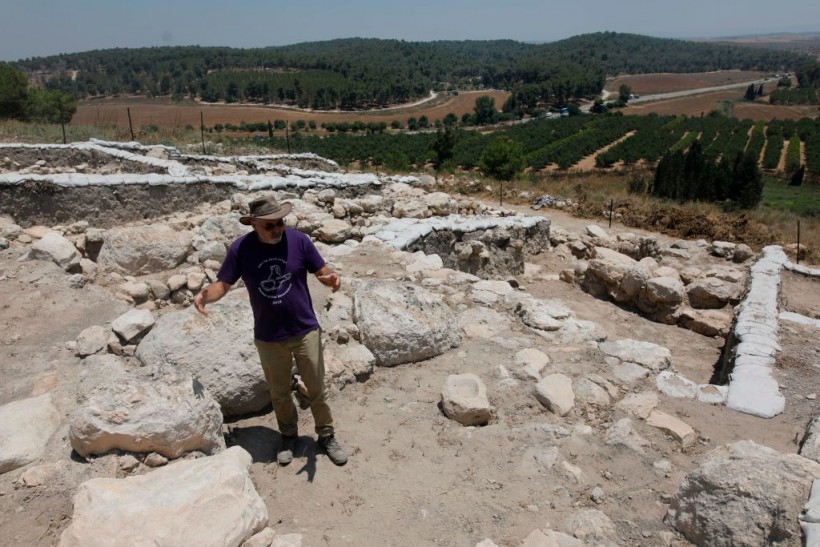Researchers from four Israeli universities, including Tel Aviv University and The Hebrew University, achieved a breakthrough in identifying burnt materials' origins and firing temperatures. Researchers noted that the findings validate Hazarel's conquest in Gath, an event in the Bible as described in the Second Book of Kings.
Dr. Yoav Vaknin led the multidisciplinary study, titled "Applying Thermal Demagnetization To Archaeological Materials: A Tool for Detecting Burnt Clay and Estimating Its Firing Temperature" published in PLOS ONE, with contributions from other researchers.

Researchers in Israel said they have pinpointed the site of an ancient Philistine town mentioned in the biblical tale of David seeking refuge from the Israelite king Saul.
Bricks, Firing, and Magnetism in Israel's Archaeology
Professor Oded Lipschits at Tel Aviv University emphasizes the crucial role of mud bricks in ancient Israel's construction, especially during the Bronze and Iron Ages. These affordable materials were commonly employed for constructing walls atop stone foundations. Understanding mud brick production intricacies becomes key to unraveling historical construction techniques.
Dr. Vaknin further contextualizes the historical use of fired mud bricks, citing examples from Mesopotamia where kiln firing enhanced durability due to stone scarcity. Drawing parallels with the Tower of Babel narrative in the Book of Genesis, he highlights the thorough firing of bricks in ancient practices.
In contrast to the prevailing belief that this firing technology reached the Land of Israel later, possibly with the Roman conquest, Vaknin suggests that, until that point, inhabitants predominantly relied on sun-dried mud bricks. Consequently, when encountering bricks in archaeological digs, inquiries arise about their firing history and methodology.
Using an innovative method, the team measures the magnetic field in bricks during heating and cooling. Dr. Vaknin explains that the clay contains ferromagnetic particles acting like compasses.
In sun-dried bricks, their random orientation creates a weak magnetic signal. However, firing at over 200°C aligns the particles with Earth's magnetic field, creating a strong and consistent magnetic field. This alignment persists as the brick cools, helping researchers determine if it underwent firing.
New Method Validates Brick-Firing Technology in Gath Excavations
In the second phase of their method, the researchers use a process called thermal demagnetization to gradually eliminate the magnetic field of the brick. This involves heating the brick in a specialized oven in a palaeomagnetic laboratory, neutralizing the Earth's magnetic field.
The heat releases magnetic signals, arranging themselves randomly, weakening the total magnetic signal. Dr. Vaknin explains the gradual process, starting at 100°C, releasing signals from a small percentage of magnetic minerals, and repeating the procedure up to 700°C.
In the lab, researchers tested the method by firing mud bricks, measuring magnetic fields, and confirming its efficacy. Unlike other techniques requiring higher temperatures for mineral changes, this method detects burning from 100°C, yielding conclusive results from 200°C. Additionally, it distinguishes the orientation of brick cooling, discerning between kiln-fired and in situ burned bricks.
Researchers used their validated method to settle an archaeological dispute at Tell es-Safi, identifying Philistine Gath's destruction to Hazael, King of Aram Damascus, around 830 BCE. Applying the new method to wall and debris samples challenged previous interpretations, providing evidence for the earliest use of brick-firing technology in the Land of Israel.
RELATED ARTICLE: King David's Kingdom Found? Israeli Archaeologist Thinks Fortified Towns Around Jerusalem Were Part of the Biblical Kingdom
Check out more news and information on Archaeology in Science Times.














